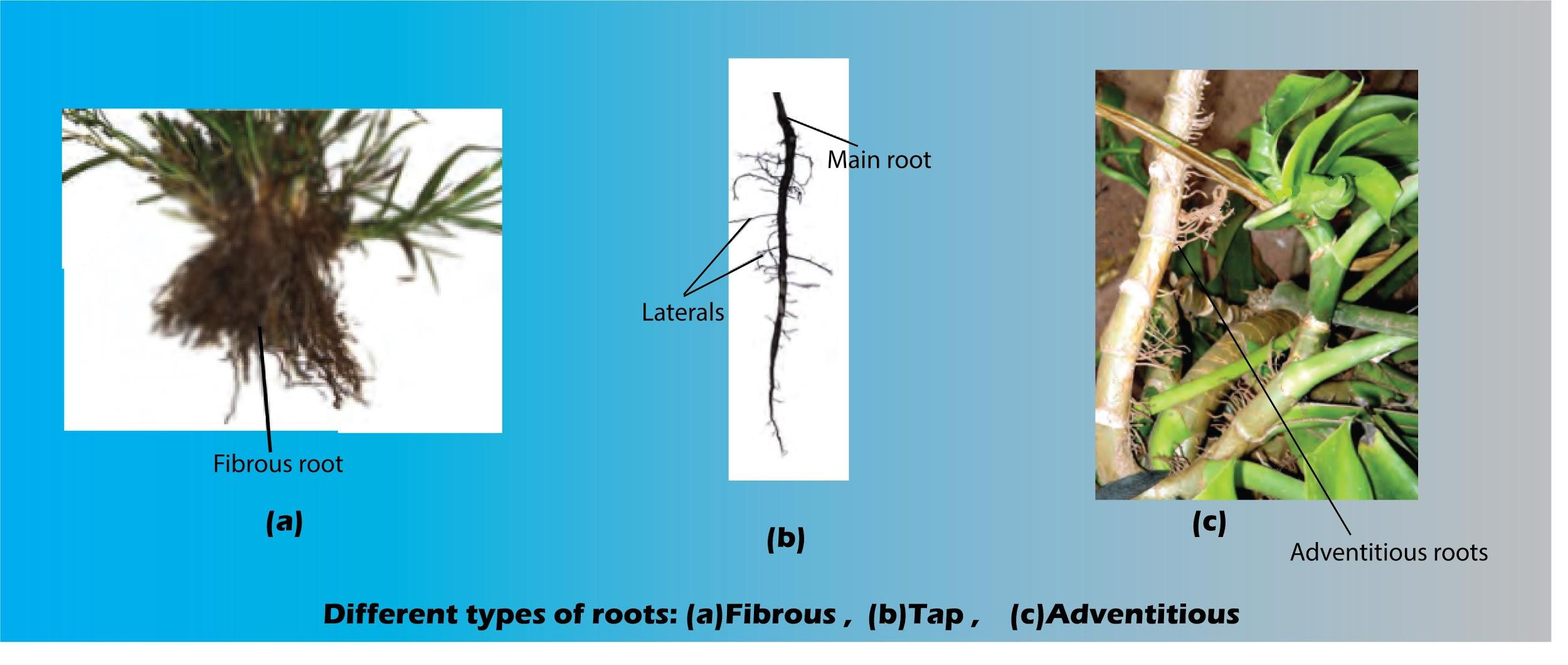
Root system composed mainly of branches rather than of one principal root is known as
(a) Adventitious roots
(b) Tap root system
(c) Fibrous root system
(d) Branched root system
Answer
570.6k+ views
Hint: A root system composed of main branches rather than of one principal root. Such root systems are mainly found in herbaceous perennials, generally the grasses, and are important in soil formation and fertility. It is characterized by a mass of roots of about equal diameter.
Complete step by step answer:
A fibrous root system is opposite to the taproot system. It is normally made up of thin, reasonably branching roots developing from the stem. A fibrous root system is widespread in monocotyledonous plants and ferns. The fibrous root system appears as a mat made out of roots when the tree has arrived at full maturity. Most trees start existence with a taproot, yet following one to a couple of years change to a wide-spreading fibrous root system with predominantly level surface roots and only a few vertical, deep anchoring roots. An ordinary mature tree 30–50 m tall has a root system that expands horizontally in every direction which way to the extent the tree is tall or more, yet well over 95% of the roots are in the main 50 cm depth of soil.

So, the correct answer is ‘Fibrous root system’.
Additional information: Fibrous roots grow genuinely near the surface of the ground. Leaves with parallel venation have fibrous roots. Forages have a fibrous root system, which helps combat erosion by securing the plants to the top layer of the soil, and covering the whole of the field, as it is a non-line crop. In a fibrous root system, the roots develop downwards into the soil and furthermore branch off sideways all through the soil. This structure forms a mass of fine roots, with no distinct tap root, because the embryonic root has died back while the plant is still young and growing.
Note: Grasses and other monocotyledons (angiosperms with a single seed leaf) have a fibrous root system. The network of roots does not arise as branches of the primary root but consists of many branching roots that emerge from the base of the stem. The massive number of threadlike roots increases the surface area for absorption of water and minerals, but fibrous roots anchor the plant less securely.
Complete step by step answer:
A fibrous root system is opposite to the taproot system. It is normally made up of thin, reasonably branching roots developing from the stem. A fibrous root system is widespread in monocotyledonous plants and ferns. The fibrous root system appears as a mat made out of roots when the tree has arrived at full maturity. Most trees start existence with a taproot, yet following one to a couple of years change to a wide-spreading fibrous root system with predominantly level surface roots and only a few vertical, deep anchoring roots. An ordinary mature tree 30–50 m tall has a root system that expands horizontally in every direction which way to the extent the tree is tall or more, yet well over 95% of the roots are in the main 50 cm depth of soil.

So, the correct answer is ‘Fibrous root system’.
Additional information: Fibrous roots grow genuinely near the surface of the ground. Leaves with parallel venation have fibrous roots. Forages have a fibrous root system, which helps combat erosion by securing the plants to the top layer of the soil, and covering the whole of the field, as it is a non-line crop. In a fibrous root system, the roots develop downwards into the soil and furthermore branch off sideways all through the soil. This structure forms a mass of fine roots, with no distinct tap root, because the embryonic root has died back while the plant is still young and growing.
Note: Grasses and other monocotyledons (angiosperms with a single seed leaf) have a fibrous root system. The network of roots does not arise as branches of the primary root but consists of many branching roots that emerge from the base of the stem. The massive number of threadlike roots increases the surface area for absorption of water and minerals, but fibrous roots anchor the plant less securely.
Recently Updated Pages
Master Class 11 Economics: Engaging Questions & Answers for Success

Master Class 11 English: Engaging Questions & Answers for Success

Master Class 11 Social Science: Engaging Questions & Answers for Success

Master Class 11 Biology: Engaging Questions & Answers for Success

Class 11 Question and Answer - Your Ultimate Solutions Guide

Master Class 11 Business Studies: Engaging Questions & Answers for Success

Trending doubts
1 Quintal is equal to a 110 kg b 10 kg c 100kg d 1000 class 11 physics CBSE

What is a periderm How does periderm formation take class 11 biology CBSE

What are porins class 11 biology CBSE

Why is steel more elastic than rubber class 11 physics CBSE

Differentiate between red algae and brown algae class 11 biology CBSE

What is boron A Nonmetal B Metal C Metalloid D All class 11 chemistry CBSE




